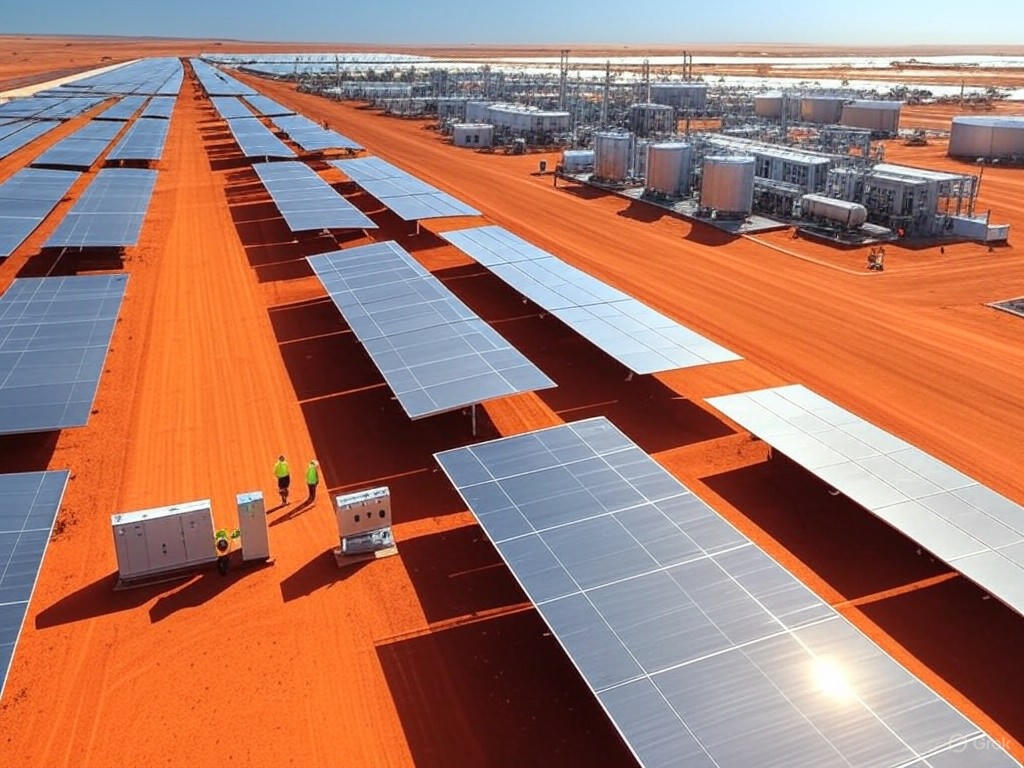Africa’s Green Hydrogen Boom: A Global Energy Frontier?
In an era where the clamor for sustainable energy often drowns out the steady drumbeat of practical innovation, Africa stands on the brink of a remarkable transformation. Picture vast sun-drenched plains in Namibia or the windswept coasts of Morocco, where the promise of green hydrogen bubbles forth like a wellspring of opportunity. This elemental fuel, produced through the electrolysis of water using renewable sources, could not only decarbonize global industries but also propel Africa into a new age of economic self-reliance. Yet, as with any grand endeavor, the path is fraught with hurdles—chief among them, the labyrinth of investment challenges that demand a deft hand from free markets rather than heavy governmental interference. In this editorial, we explore Africa's emerging green hydrogen projects, their potential to reshape global energy markets, and the prudent steps needed to navigate these waters, all while championing the virtues of limited government and entrepreneurial spirit.
Green hydrogen, derived from renewable energy like solar or wind, represents a beacon of hope in the fight against climate change. Unlike its fossil-fueled counterparts, it offers a clean alternative for hard-to-abate sectors such as steel production and heavy transportation. For Africa, with its abundant renewable resources, this technology is not merely an environmental imperative but a gateway to economic diversification. Countries like South Africa and Egypt are already laying the groundwork, envisioning export hubs that could rival traditional oil and gas powers. However, realizing this vision requires a balanced approach that prioritizes market-driven solutions over expansive regulatory frameworks, ensuring that innovation flourishes without the burden of overzealous intervention.
The Rise of Green Hydrogen in Africa: A Narrative of Potential
Africa's green hydrogen story is one of untapped potential, where natural endowments meet the ingenuity of private enterprise. Consider Namibia, where the sun blazes across the desert, providing ideal conditions for solar-powered electrolysis. Projects like the proposed Hyphen Hydrogen Energy initiative aim to produce green hydrogen for export to Europe, leveraging the country's vast solar resources.  A sprawling solar array in Namibia, where renewable energy harnesses the sun's power to split water molecules, illustrating Africa's renewable abundance.
A sprawling solar array in Namibia, where renewable energy harnesses the sun's power to split water molecules, illustrating Africa's renewable abundance.
This development is not isolated. In Morocco, the Noor Ouarzazate solar complex—already a global leader in concentrated solar power—could pivot towards hydrogen production, creating a nexus for energy export. Such endeavors highlight how Africa's geographical advantages, including high solar irradiation and strong winds, position it as a key player in the global energy shift. According to the International Energy Agency (IEA), green hydrogen could meet up to 20% of global energy needs by 2050, with Africa poised to supply a significant portion due to its low production costs.
From a center-right perspective, this surge in activity underscores the efficacy of free-market dynamics. Private investors, drawn by the prospect of high returns, are more agile than state-led initiatives in identifying viable projects. Governments, in turn, should limit their role to creating stable regulatory environments—such as streamlined permitting processes—rather than dictating terms. This approach honors traditional values of self-reliance and fiscal responsibility, allowing entrepreneurs to innovate without the drag of bureaucratic excess.
Reshaping Global Energy Markets: Opportunities Amid Uncertainty
The potential of African green hydrogen to reshape global energy markets is nothing short of revolutionary. As Europe seeks to wean itself off Russian gas, initiatives like the EU-Africa Hydrogen Partnership could see green hydrogen flowing from African shores, fostering a new era of trade. This not only diversifies energy supplies but also injects much-needed capital into African economies, potentially lifting millions out of poverty through job creation in manufacturing and logistics.
Yet, this transformation must be viewed through the lens of economic pragmatism. Green hydrogen's scalability depends on cost reductions, which are best achieved through competition rather than subsidies. The Wall Street Journal recently highlighted how projects in South Africa could undercut European production costs by 30%, thanks to cheaper land and labor. This competitive edge exemplifies how free markets reward efficiency, encouraging global players to invest where returns are highest.
Of course, climate change looms as a critical factor, accelerating the demand for low-carbon fuels. Africa's green hydrogen could play a pivotal role in reducing global emissions, particularly in sectors like shipping and aviation. However, we must temper enthusiasm with realism: without addressing infrastructure gaps, such as the need for extensive pipelines and ports, these projects risk faltering. Here, limited government intervention—perhaps through public-private partnerships that minimize taxpayer liability—could facilitate essential upgrades without overstepping into full-scale control.
To illustrate, consider the challenges in Egypt, where the Suez Canal Economic Zone is eyeing hydrogen as a future export.  Engineers inspecting a prototype hydrogen pipeline in Egypt, symbolizing the infrastructure investments vital for integrating green hydrogen into global trade networks.
Engineers inspecting a prototype hydrogen pipeline in Egypt, symbolizing the infrastructure investments vital for integrating green hydrogen into global trade networks.
Investment Challenges: Navigating the Path with Market Wisdom
Despite the optimism, investment in African green hydrogen is beset by challenges that demand astute, market-oriented solutions. Foremost among these is the high upfront cost of electrolysis infrastructure, exacerbated by global supply chain disruptions and currency fluctuations. Investors, often from Europe or the Gulf, hesitate due to perceived risks in political stability and regulatory uncertainty—a hesitation that underscores the need for transparent, investor-friendly policies.
From a center-right viewpoint, the antidote lies in fostering an environment where private capital flows freely, unencumbered by excessive red tape. Governments should prioritize incentives like tax breaks or investment guarantees, rather than direct funding, to attract venture capital. The IEEE Spectrum notes that Africa's hydrogen projects could attract $100 billion in investments by 2030, but only if risks are mitigated through market mechanisms, such as insurance schemes backed by international bodies.
Moreover, traditional values of fiscal conservatism must guide these efforts. Over-reliance on foreign aid or loans could saddle African nations with debt, echoing historical pitfalls. Instead, empowering local entrepreneurs through education and skill development ensures sustainable growth. As evidence, a report from the African Development Bank emphasizes that public policies should focus on enabling private sector leadership, aligning with the ethos of limited government to deliver long-term prosperity.
Conclusion: A Prudent Path Forward
In the grand tapestry of global energy, Africa's green hydrogen projects offer a thread of hope, weaving together innovation, economic opportunity, and environmental stewardship. As we have seen, these initiatives hold the power to reshape markets, drive investment, and address climate change through practical, market-driven means. Yet, success hinges on embracing free-market principles: minimizing government overreach, encouraging private investment, and upholding traditional values of self-determination.
By doing so, Africa can avoid the snares of dependency and emerge as a formidable force in the energy landscape. Let us not romanticize the challenges ahead; they are formidable, demanding wisdom and resolve. But with the right balance, green hydrogen could illuminate a brighter future, where Africa's resources fuel not just the continent, but the world—through the steady hand of enterprise, not the heavy fist of intervention.

